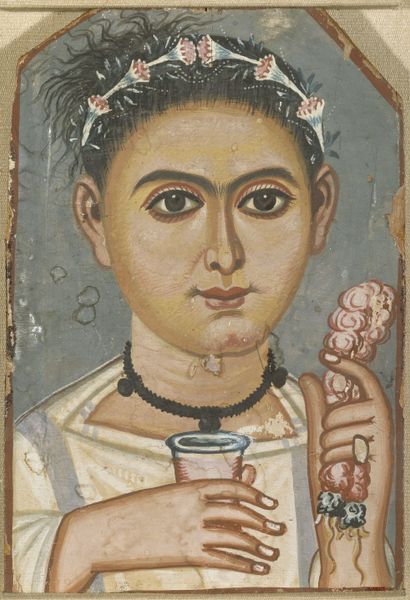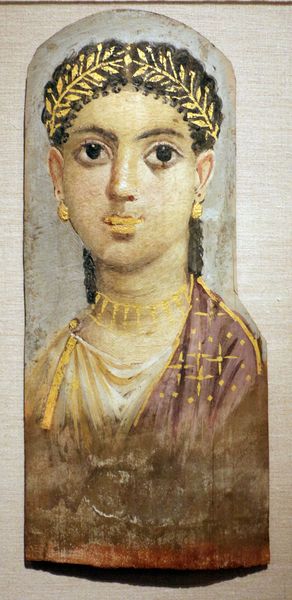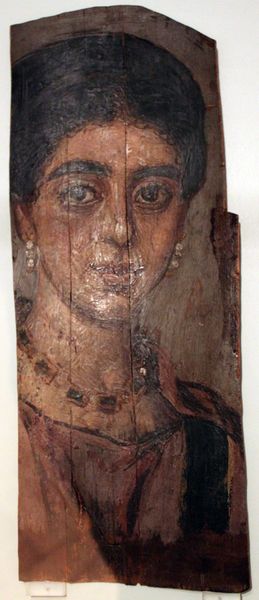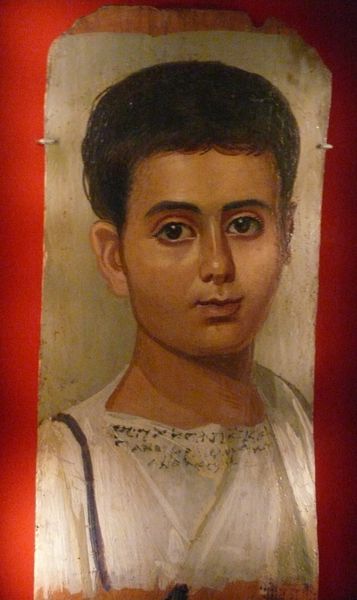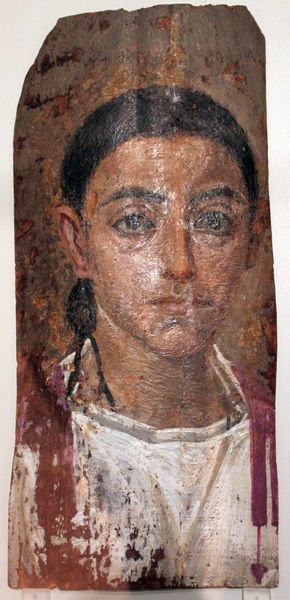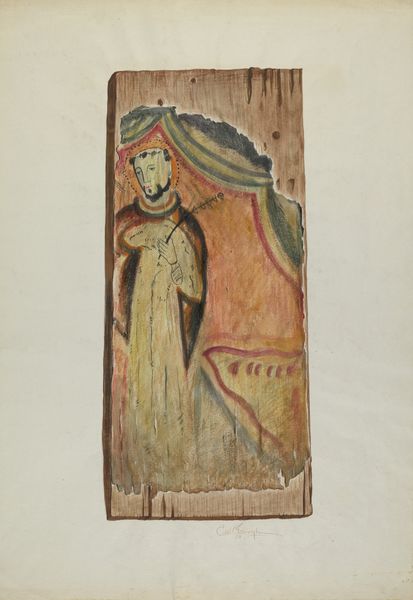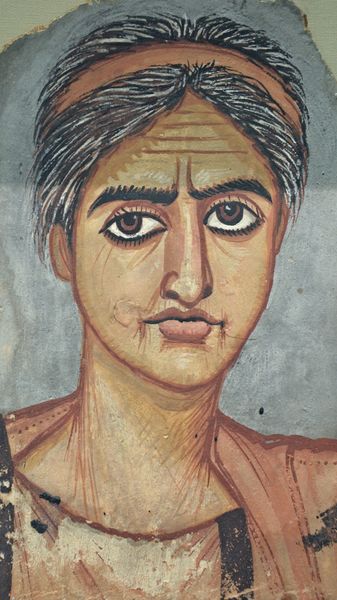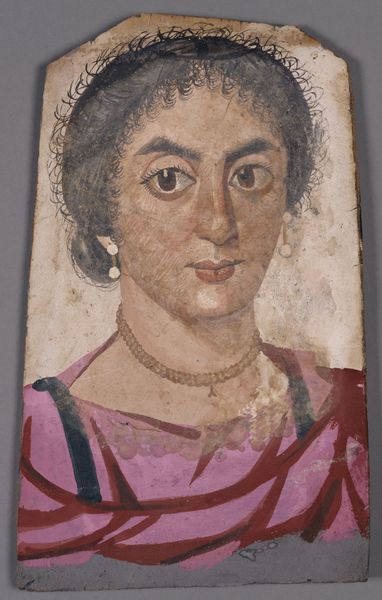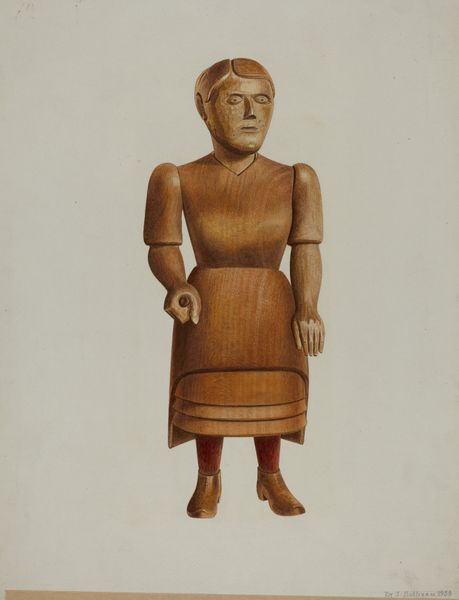
tempera, painting
#
portrait
#
tempera
#
painting
#
ancient-egyptian-art
#
oil painting
#
ancient-mediterranean
#
miniature
#
realism
Dimensions: 15.7 x 28.4 cm
Copyright: Public domain
This portrait of a young person was made in Roman Egypt between the 1st and 3rd centuries, using pigments on a wood panel. The technique involved encaustic painting, where colored wax is heated and applied, layer upon layer. This was a painstaking method, requiring great control to achieve the lifelike details and subtle gradations of tone, though these materials were relatively common. The effect is luminous, as the wax refracts light. These portraits weren't just art; they were integral to funerary practices, placed over the face of the mummified. The naturalistic style reflects the Roman influence in Egypt at the time, but the materials and function are deeply rooted in Egyptian tradition. The amount of labor to produce something like this shows the value placed on honoring the dead and also the value of such artisanal skills. Considering the materials, the process, and its place within society, this portrait speaks volumes about identity, belief, and the intersection of cultures. It reminds us that even in fine art, the craft and context are key to understanding its meaning.
Comments
No comments
Be the first to comment and join the conversation on the ultimate creative platform.
